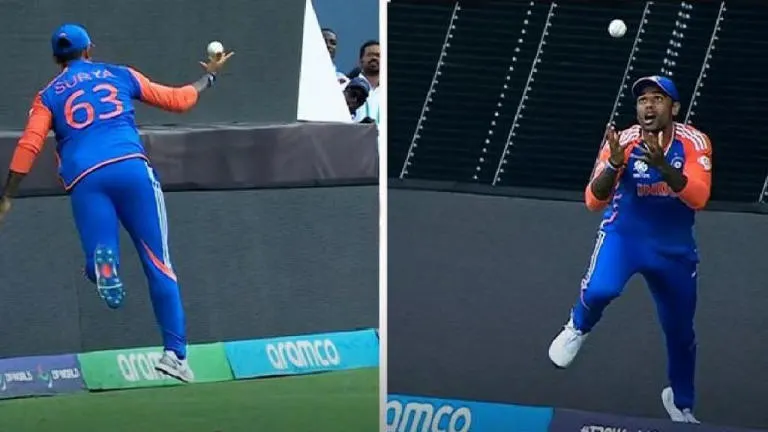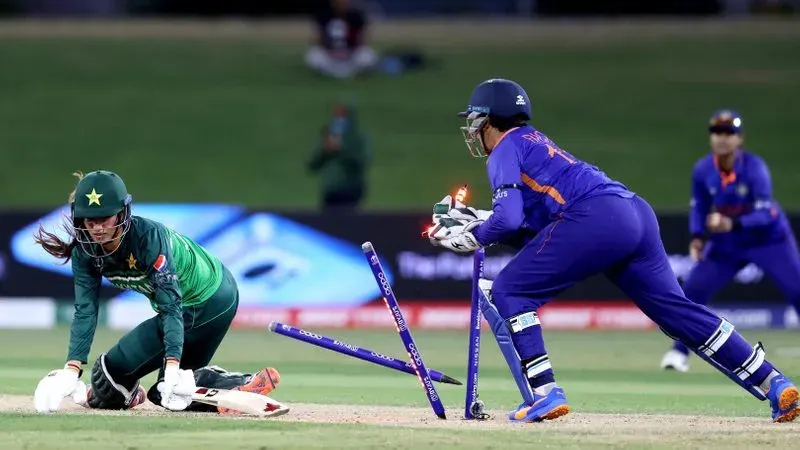
The International Cricket Council (ICC) has made a major change to the boundary catch rule. This new rule will stop fielders from juggling the ball multiple times in the air while being outside the boundary to complete a catch.
This change will be applied by the ICC starting next month, and the MCC (Marylebone Cricket Club) will include this rule in the official Laws of Cricket from October 2026.
What Was the Old Boundary Catch Rule?
Until now, a fielder could:
- Catch the ball inside the boundary
- Jump outside the field, toss the ball in the air
- Come back inside and complete the catch
- Or toss it to another teammate who finishes the catch inside the field
These types of catches looked amazing and were completely legal under current rules, as long as the fielder didn’t touch the ground outside with the ball in hand.
One famous example is Michael Neser’s catch in Big Bash League 2023. He caught the ball, jumped outside, tossed it in the air, re-entered the field, and completed the catch. It was allowed back then.
What Has Changed Now?
Under the new rule, the ICC has banned catches involving multiple tosses in the air by the same fielder while outside the boundary.
This means:
- If a fielder steps or jumps outside the boundary and tosses the ball more than once before completing the catch, it will now be declared illegal.
- Any catch involving juggling the ball outside the field repeatedly will now result in runs for the batting side, often a six if the ball crossed the boundary.
So, the “flying circus” catches we used to see on the boundary will be counted as invalid.
What Is Still Legal?
The rule still allows certain types of boundary catches as long as they follow these:

- The fielder’s first contact with the ball must happen inside the field.
- The fielder cannot touch the ground outside while in contact with the ball.
- One clean toss and catch is allowed — no repeated air tosses outside the rope.
- If one player tosses the ball back inside to another player (without juggling), that is legal, only if both remain in contact with the ground inside or in the air.
This makes the game fairer and reduces confusion in fast-paced moments.
Why the Rule Was Changed?
Over the years, many fielders started using this rule in clever ways — juggling the ball outside the rope multiple times before catching it. While it looked cool, it also started to look unnatural and against the spirit of the game.
The MCC and ICC felt the need to simplify and standardize the boundary catch rule. Now, players will have to take cleaner catches without using tricks outside the field.
Bonus Rule Update: New Ball After 34 Overs in ODIs
Along with the boundary rule change, ICC also updated another rule for One Day Internationals (ODIs):
- From 1 to 34 overs, two new balls will be used as usual.
- After 34 overs, the fielding team will choose one of the two balls to continue with for the rest of the innings.
This change is aimed at making the game more balanced between bat and ball.
Also Read: India vs New Zealand 2026: Full Schedule Announced for ODI and T20 Series in January
When Will These Rules Start?
- ICC: Will enforce the new boundary catch rule starting next month (July 2025).
- MCC: Will officially add this rule to the Laws of Cricket from October 2026.
Disclaimer: This blog explains new ICC rule changes based on official announcements and media reports. Final implementation may be subject to adjustments by MCC or ICC.









